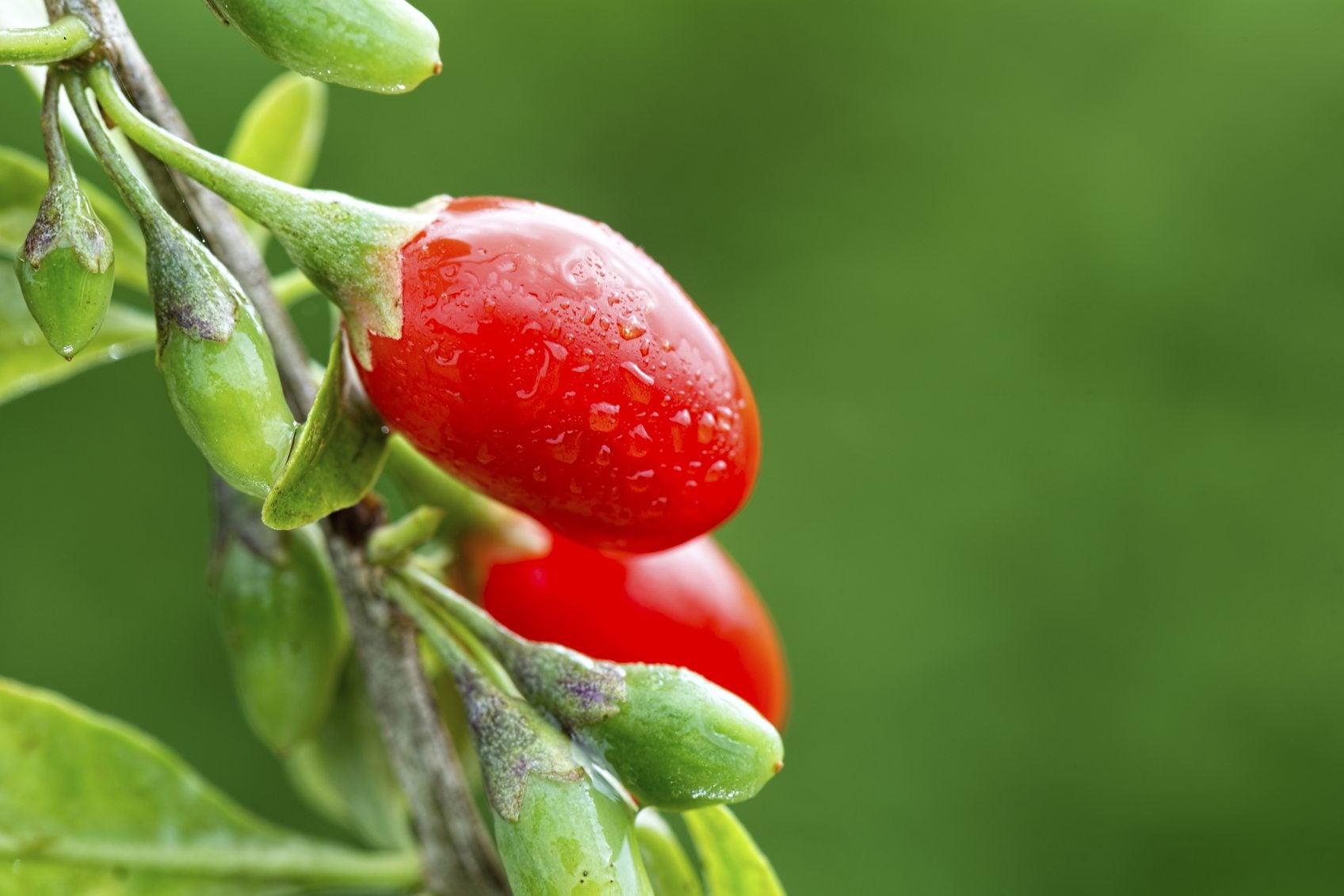Potted Goji Berries: Growing Goji Berries In Containers


Reported to be among the mightiest of all superfoods, little red goji berries are said to extend life expectancy, improve the immune system, treat and prevent cardiovascular disease, enhance digestion, improve eye health, stimulate brain activity, and may even be effective against some types of cancer. Although the jury is still out and opinions are mixed when it comes to goji berries’ curative properties, there’s no doubt that the tasty, tart little fruit is packed with vitamins, minerals, and antioxidants, and definitely loaded with flavor.
Can Goji Berries Grow in Containers?
If you like the idea of growing this flavorful little berry but you’re lacking garden space, growing goji berries in containers is a viable alternative. In fact, potted goji berries are surprisingly easy to grow and maintain. Although goji berries are suitable for growing in USDA plant hardiness zones 3 to 10, growing goji berries in containers allows you to bring the plant inside when the temperatures drop in autumn.
How to Grow Goji Berries in Containers
When it comes to selecting a container for growing goji berries, bigger is definitely better. Width isn’t as critical, and a pot with a diameter of at least 18 inches (46 cm.) is sufficient. However, the plant will stop growing when the roots reach the bottom of the container, so a deep container is the way to go if you want a good-sized plant. Even with a large container, your goji berry plant will likely be smaller than in-ground plants. Be sure the container has at least one good drainage hole, as the plants are likely to rot in poorly drained soil. Fill the container with a mixture of approximately two-thirds high quality potting soil and one-third sand. It’s also important to note that this is a good time to add a generous amount of well-rotted manure or compost, which will provide all the nutrients required to sustain the plant. In most climates, goji berries need full sunlight. However, if you live in a climate where summer temperatures top 100 degrees F. (37 C.), partial shade is beneficial – especially during the afternoon.
Care of Goji Berries in a Pot
Keep the potting mix moist until the plant is established and showing healthy new growth – usually the first two to three weeks. Thereafter, water regularly. Although goji berries are fairly drought-tolerant, remember that container plants dry quickly. Be careful not to overwater, however, as goji berry plants won’t tolerate soggy soil. Feel the soil with your fingers and water deeply if the top of the soil feels dry, then allow the pot to drain thoroughly. Water goji berries at soil level and keep the foliage as dry as possible. Cover the surface of the soil with 2 to 4 inches (5-10 cm.) of mulch, such as dry leaves or bark chips. This will help prevent the soil from becoming too dry. Goji berry plants require no fertilizer if manure or compost was added at planting time. Additionally, refresh the potting mix by working a little organic material into the soil at least once every year. Place indoor goji berries where the plant receives at least eight hours of sunlight. If this isn’t possible, you may need to supplement available light with a full-spectrum or grow light. Stake the plant if it begins to sprawl. Prune lightly to encourage branching and maintain a neat appearance. Otherwise, goji berries generally don’t require much pruning. Harden off goji berry plants gradually before moving them back outdoors in spring.
Sign up for the Gardening Know How newsletter today and receive a free copy of our e-book "How to Grow Delicious Tomatoes".

A Credentialed Garden Writer, Mary H. Dyer was with Gardening Know How in the very beginning, publishing articles as early as 2007.